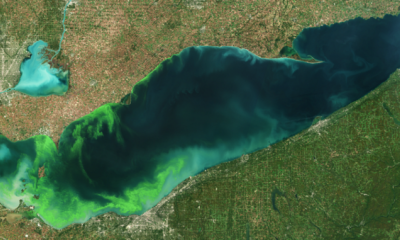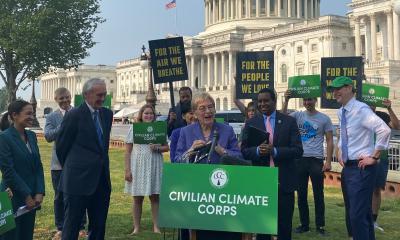Lake Erie Water Crisis

Lake Erie Water Situation: Helpful Information
The water emergency in Toledo has abated for now, but the fundamental challenge remains: protecting Lake Erie, which is the source of our drinking water along the north coast. Never before has this much attention been focused on the challenge that we face as a region, a state, and a nation.
Since last year, numerous federal and state and local officials and agencies have partnered with universities and other researchers to deliver the best possible algal bloom data and tracking. You can find the most recent Lake Erie Harmful Algal Bloom Bulletin by clicking here.
The City of Toledo tests treated and untreated lake water regularly during the summer months when algal blooms are a threat. You can see their latest water quality recommendation here.
The more information that the public has, the more effective our response to this challenge will be.
News articles related to the water emergency and Lake Erie algae:
Ohio provides $150M in loans to fight algae
Southwest braces as Lake Mead water levels drop
Phosphorus control efforts have slipped as algae problem grows
Toledo Water Ban is an Indictment of State Failure to Address Algal Blooms: Editorial
Rep. Marcy Kaptur wants local testing, protocols, to battle the green slime
Speakers at UT Forum Call Crisis Turning Point
Special Flights to Monitor Lake Erie Algae Bloom
Website links that provide additional information you may need:
Ohio Algae Information Web Page
- This page will allow you to see Algal Toxin Results from Lake Erie, Ohio State Park Beaches and public water supplies or to report an algae bloom to the State of Ohio EPA
- City of Toledo Microcystin Event Preliminary Summary, August 4, 2014
- Toledo Water Quality Test Result Report: This website contains the results of tests performed by US EPA, OH EPA and Toledo AFTER consensus was reached on using the ELISA - Unlysed Quenched methodology. Test results include Microcystin Raw Water, Microcystin Tap Water, and overall Drinking Water Quality Reports.
Information from the United States Environmental Protection Agency
USEPA Region 5
USEPA WATER
WATER RESOURCES
Consumer Confidence Reports
Information from the United States Department of Agriculture
Natural Resources Conservation Service
National Resources Conservation Service
National Resources Conservation Service Water Quality
Animal Waste
Salinity
Nutrients
USDA WATER QUALITY INFORMATION CENTER
Collaboration Toolkit: Protecting Drinking Water Sources Through Agricultural Conservation Practices
Annual Phosphorus Loss Estimator
Water Quality Index for Agricultural Runoff
Surf Your Watershed
Nonpoint Source Outreach Toolbox
Watershed Management Optimization Support Tool




